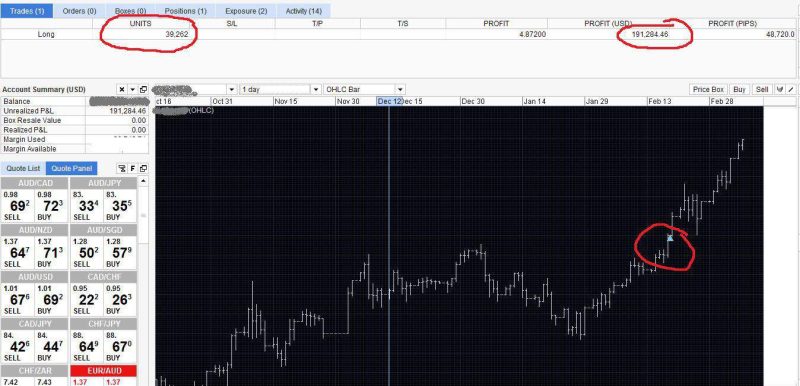
Also Read: What Is Tracking Stocks?
Contents
- Introduction to Stock Borrow
- What are Securities Lending and Borrowing (SLB)?
- History of Securities Lending
- Understanding Securities Lending
- Types of Securities Lending Practices
- Securities Lending Lifecycle
- Benefits of Security Lending
- Borrowing as a Trader
- Understanding Short Selling
- Conclusion
- FAQs
Introduction to Stock Borrow
Stock borrows are transactions wherein a stockbroker lends an investor shares of stock. Traders borrow stocks frequently in hoping of short selling them, then repay the loaned stock by purchasing new units at a lower price. Stock borrows include interest payable to the lending firm, much like a standard loan.
The interest rate on stocks loans, on the other hand, is established by the markets instead of by current interest rates. Stocks that are extremely volatile or in great demand among short-sellers are generally more expensive to obtain because they are increasingly scarce and have higher interest rates.
Biotech companies, for example, or equities like Tesla, which are extremely volatile and are in strong demand among traders, will be more expensive to obtain or, at some brokerage firms, impossible to borrow. Large-cap companies that are more stable, such as Apple or Microsoft, are often easier to borrow, and brokerage firms offer lower interest rates on these shares.
What are Securities Lending and Borrowing (SLB)?
Securities Lending and Borrowing is the momentary lending in securities by a borrower to a lender of equities for a set period of time and for a set charge. The SLB system is widely popular across the world because it offers cash flow in the stock market, which improves market effectiveness and efficiency.

Securities lending and borrowing is an over-the-counter (OTC) commodity in most jurisdictions, where supervisors allow borrowing and lending transactions between organizations. SLB, on the other hand, is an exchange-traded product (ETP) in India.
Shareholders who have certain securities in their Demat account and have no plans to sell them anytime soon can use the SLB section to loan the securities for a service charge and a set period of time, whereas market participants in search of short-term potentials can borrow the shares and potentially profit from the price fluctuations in the stock price.
History of Securities Lending
Taking a short position and the borrowing of stocks that goes along with it may be traced all the way back to the beginnings of stock trading. The NYSE (New York Stock Exchange) used to have a lending post, but it was shut down in 1933 due to public outcry about short trading.
Formal equity lending operations began in the Capital of England in the early 1960s, and by the early 1980s, it had become a thriving sector. The technique has progressed from a back-office function to a typical investing strategy that helps huge financial institutions increase their returns.
Understanding Securities Lending
Retail investors do not loan securities directly; instead, they are mediated through brokerage or traders. A securities lending contract or loan agreement must be signed to complete the transaction. This document outlines the loan's parameters, including the loan's length, rate of interest, borrower's fees, and collateral type.
Borrowers must furnish at least almost all of the security's value as collateral, according to existing standards. The volatility of a security's collateral is also a factor. On stocks loans, the original collateral must be at minimum 102% of the market value of the lent securities, including any accumulated interest in the event of non-payment securities.
Furthermore, the fees and interest imposed on a securities loan are sometimes determined by how difficult it is to identify the stocks sought. The cost rises as the number of accessible securities becomes more limited.
Clearing brokers, who arrange the deal between both the borrowing and lending sides, are required in normal securities lending. For the stocks, the borrower pays a charge to the lender, which is shared between the lending side and the clearing agency.
Types of Securities Lending Practices
Stock borrowing is a subset of the much broader securities lending market. Investors considering borrowing shares should be aware of the many forms of securities lending systems accessible.

Stock Borrows
The typical short-selling method is a stock borrow. A dealer who wishes to sell a stock asks his or her broker to let him or her borrow shares from yet another trader inside the brokerage, which the financial services company does while collecting interest.
Stock loans are usually for a period of up to 1 year with an annualized percentage, although the individual from which the stocks were borrowed has the right to seek them back at any point. Short sellers who hold borrowed shares for an extended period of time face a major risk because they have no power over when the broker may take the borrowed shares back.

Stock lending
Stock lending is a trade in which stocks are used as cash collateral to acquire a cash loan. In this situation, the stockholder deposits the shares in a safe bank with a creditor in exchange for a cash loan.
The cash loan is subjected to an interest rate, much like a regular loan, and once the credit is returned to the creditor with interest, the shares are given to the owner. Some lenders will provide up to 90 per cent of the value of the stock put up as security as cash in the loan, based on the reliability of the loaned securities. The loan-to-value proportion is the term for this calculation.
Securities Lending Lifecycle
Securities lending have a lifespan or cycle to complete when unlike most buy and sell trade. The cycle begins when the transaction is initiated and continues till the stock is returned back to the previous owner.
The first stage of the securities lending cycle is the settlement stage. In this stage, both the initial agreement and the following return must be properly directed to the market, and payment must be watched.
The second stage is the collateral stage. To guarantee that they will be fully protected in the case of a borrower fail, the lender must get collateral. Lenders can feel confident when they lend securities because they will definitely collect the extra margin value beyond the value of the assets lent, margins typically vary between 2–10 per cent, based on the risk profile of the lender and the payment market. The collateral procedure varies based on the type of collateral utilized; the most common are money, cash pool, and bilateral collateral.
Billing is the next stage. Charges or rebates will accumulate for most securities lending operations, which will be reviewed and paid on a monthly pay period. This guarantees that the lender receives the transaction fee in a timely way and is capable of passing it on to the initially registered proprietor.
When a stock is borrowed after a declared dividend payout settlement date, the borrower must pay the dividend by making a dividend payout to the actual owner of the shares. A dividend is considered a stage in securities lending.
If a stock is borrowed after a corporate action settlement date has been published, whether required or optional, the borrower must handle the specific activity according to the lender's instructions.
The final stage is the return process. When a borrower does no longer need security, they can call it into the lender's trading floor to trigger a return.
Benefits of Security Lending
Short selling, whereby an investor obtains securities to sell them quickly, relies heavily on securities lending. By dumping the security and then purchasing it again at a cheaper price, the borrower intends to gain. Because the original owner temporarily transferred ownership to the borrower, the borrower is responsible for paying any profits to the lender.
The lender is rewarded in these operations by agreement fees and also receives the security back at the conclusion of the transaction. This enables the lender to increase its profits by receiving these charges. The debtor benefits from the chance of profiting from the stocks by shorting them.
Arbitrage, hedging, and fail-driven borrowing are all examples of securities lending. The securities lender benefits in all of these cases by either earning a little return on assets already in its holdings or maybe meeting cash-funding demands.
Borrowing as a Trader
Borrowing for the purpose of selling a stock short is simple, but there are a few crucial guidelines to follow. To begin, practically all brokerages will ask you to maintain minimum cash collateral in your balance to function as security for the borrowed shares. This fee varies per firm and is determined by the value of the stock borrowed.
If your user's account cash balance drops below the needed leverage, the stockbroker will send you a margin call, which is effectively an option offering you a small period of time to deposit additional funds or the stockbroker will liquidate your short position and take back the borrowed stock.

Any stock lending will also be susceptible to the brokerage's interest rates. Interest rates are usually determined by the instability and availability of borrowed stocks. Lastly, you are accountable for repaying any profits received while owning the shares. The dividends will be paid by the brokerage to the stock's original owner, who was borrowing securities.
Understanding Short Selling
A short sale is when you sell borrowed securities and then buy them back. The objective is to sell the assets at a better price and then purchase them at a lower price. When a securities borrower seriously thinks the value of the securities is going to crash soon, he engages in these transactions in order to profit from the disparity between the sale and purchase prices.
The securities lending agreement fees to the stock lending broker are due immediately after the agreement period has expired, regardless of how much profit the borrower makes from the short sale.
Rights and Dividend payment
Whenever security is exchanged as part of a loan arrangement, the borrower receives full rights from the securities lender. This contains the ability to vote (voting rights), the right to earnings, and any other distribution rights. Frequently, the borrower pays the lender sums equivalent to profits and other incentives.
Conclusion
Stock borrowing is fraught with dangers. Borrowed shares can be pulled in by the registered proprietor at any moment, causing you to exit your short position early. Furthermore, it is critical to completely comprehend your brokerage's credit limits, since failure to do so may force you to exit your investment.
Another disadvantage of borrowing stocks for short selling is that you will always pay the interest to the broker on the units you borrowed, as well as rewards paid out when the stock is held.
Regardless of these drawbacks, borrowing shares provides a simple way to profit from dropping stock prices. Before contemplating short selling, investors should carefully consider the risks and benefits of stock borrowing and be equipped to cope with damages from terminated holdings.
FAQs
What is it called when you borrow a stock?
It is called Stock lending and borrowing (SLB). Stock lending and borrowing is a method whereby a trader borrows shares they don't already own or lend equities they don't intend to sell right away. SLB transactions, like loans, take place at an interest rate and for a period of time determined by the two entities involved.
How do brokers borrow stocks?
Securities lending is the term for it. Your brokerage will pay you a commission to take your stocks and lend them to somebody else through this service. That person is usually a short seller that needs to borrow your shares and dump them before it goes down. The borrower expects to repurchase it at a lower cost and refund it to you.
How does a stock get borrowed?
Stock borrows are transactions in which a stockbroker lends client security. Traders frequently borrow shares in order to short sell them, then repay the loaned stock by purchasing additional units at a reduced price.
What is a securities lending agreement?
The conditions of a security lending loan are governed by a securities lending agreement. The agreement specifies the form of protection, which can be cash, securities, or a line of credit with a value equivalent to or higher than the borrowed security. The security borrower must pay a loan charge to the creditor, which is usually paid monthly. The debtor is also contractually bound to repay the lent security on a specific future date or when the lender requests it.

















